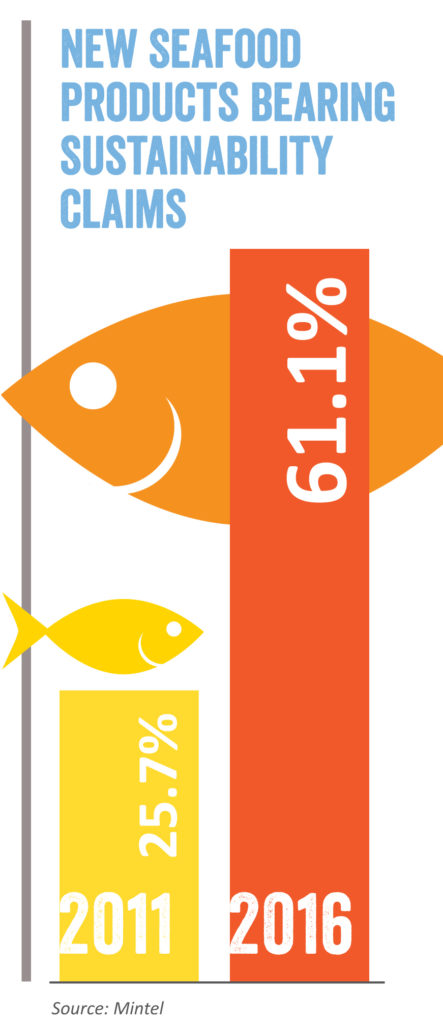 Across categories, sustainability is a growing concern for shoppers—and a growing trend in retail. In general, sustainable choices are those that do little (or less) harm to the environment and ecosystem, and that help ensure an ongoing supply of product. Many producers and retailers have already made strides to deliver more sustainable options—from sourcing local produce, to creating paper goods from recycled materials, to reducing wasteful packaging. Now, many consumers and retailers alike are setting their sights on seafood.
Across categories, sustainability is a growing concern for shoppers—and a growing trend in retail. In general, sustainable choices are those that do little (or less) harm to the environment and ecosystem, and that help ensure an ongoing supply of product. Many producers and retailers have already made strides to deliver more sustainable options—from sourcing local produce, to creating paper goods from recycled materials, to reducing wasteful packaging. Now, many consumers and retailers alike are setting their sights on seafood.
“In the same way that shoppers are looking for more local produce, they’re also looking for traceability and a greater connection to source when it comes to seafood,” says Josephine Theal, Senior Category Solutions Manager for Daymon.
According to a 2016 survey by insights firm GlobeScan, consumers now rank sustainability higher in importance than both price and brand. The same survey showed that 72 percent of seafood-eating consumers agree shoppers should only consume seafood from sustainable sources. That may help explain why sustainability claims have increased dramatically for new seafood product launches—rising from just 25.7 percent in 2011 to over 61 percent in 2016, according to market research firm Mintel.
Though the majority clearly agree seafood sustainability is important, not everyone uses the same definition for what that means. “Some retailers and brands have their own sustainability guidelines, and there are also a number of different third-party organizations that set standards and certify fisheries and facilities,” Theal explains. While retailer- and brand-specific standards may vary, third-party certifiers are typically consistent in prohibiting overfishing, requiring seafood to be grown or caught in a way that limits negative effects on the surrounding ecosystem, and including protections for workers.
“There’s a definite benefit of aligning with a third-party organization,” says Theal. “When a shopper sees that certification seal, it gives them an inherent sense of trust.” What’s more, according to GlobeScan, 54 percent of shoppers are also willing to pay more for a product that’s sustainability certified.
Some innovative brands are taking transparency to the next level by also providing specific traceability information on packaging. Some packages show fishing locations or zones where the actual product was caught, or include QR codes shoppers can scan to see the fisherman who caught it. This reinforces the idea that there are people behind the product, looking out for what’s best. It’s also the kind of connection and story-telling consumers are increasing looking for, says Theal. “If retailers don’t jump on sustainability now, they’re going to miss the boat.”

